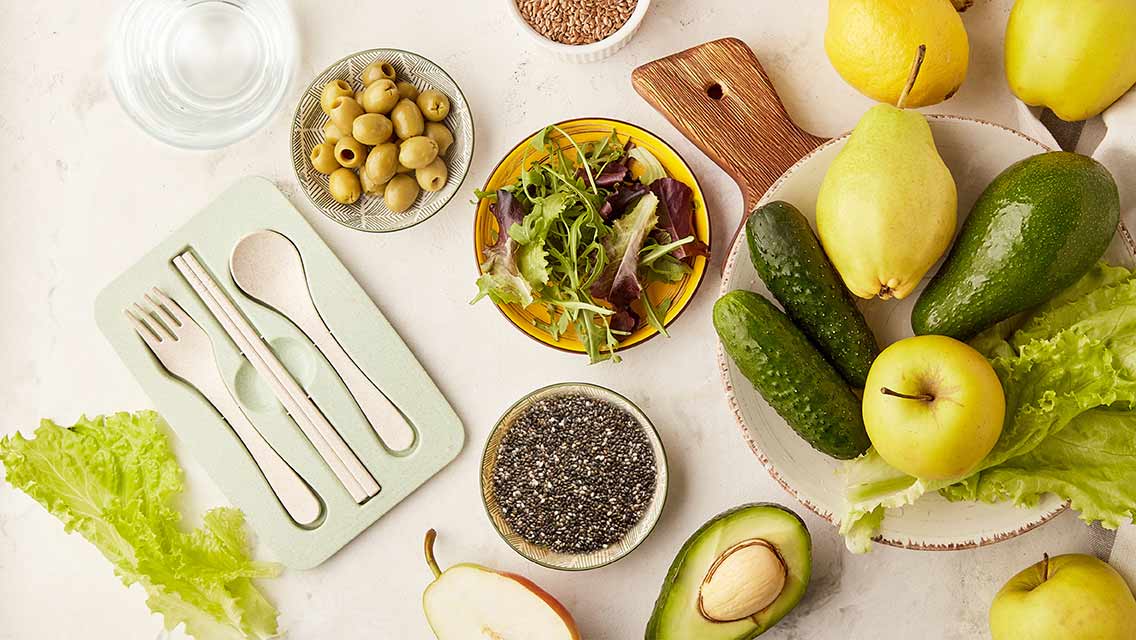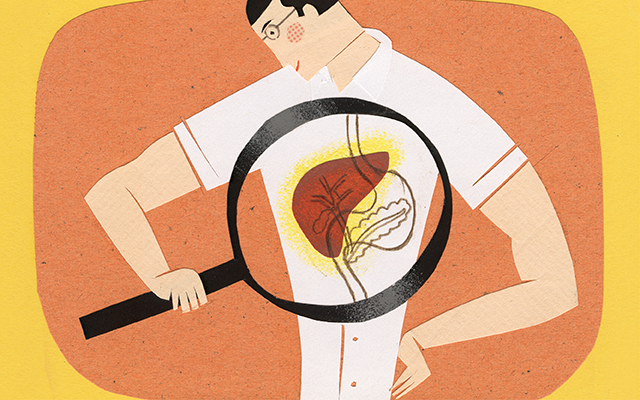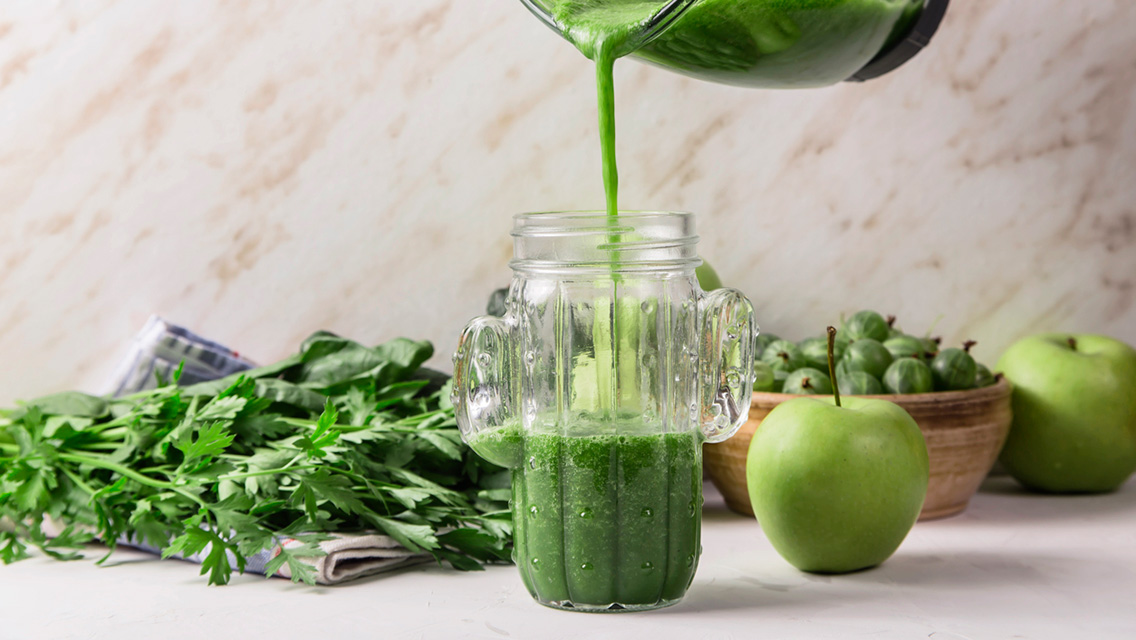Anyone who’s been stuck behind a bus inhaling big gulps of diesel exhaust or noticed a funny plastic taste in bottled water has probably wondered about the effects of those extra toxins entering the body — as well as how to get rid of them.
The instinct to detox is understandable: Each year, an estimated 2,000 new chemicals are registered for everyday use in the United States, notes functional-medicine doctor Robert Rountree, MD, who adds that “humans have become rent-free storage systems for synthetic chemicals.”
ARTICLE SHORTCUTS
1. Make sure your symptoms aren’t related to something else.
2. Keep new toxins off your plate.
4. Continue with strategies No. 2 and No. 3.
5. Make sure you’re getting your minerals.
6. Eat your (brassica) veggies.
8. Load up on fiber — and don’t forget protein.
A wealth of research shows that toxic exposures can contribute to weight-loss resistance, fuel chronic conditions like cancer and diabetes, and both trigger and aggravate autoimmune conditions. So, engaging in a strategic detox protocol can help you maintain — and improve — your overall health.
Just as toxins can cause problems as they enter and stay in the body, they can cause similar trouble on their way out. If we detox too fast, or without the right support, we run the risk of reabsorbing some of the dangerous chemicals as they try to exit the body.
When the toxins being released from the body’s tissues outpace the body’s ability to eliminate them, they stay in the bloodstream, triggering an inflammatory response, and causing people to feel, in the unofficial parlance, crappy.
“There are two phases of liver detoxification. The first phase liberates the toxin, and the second phase deactivates it. Many people have difficulty with phase two,” writes Eileen Laird, author of A Simple Guide to the Paleo Autoimmune Protocol. “If you feel sick on a detox protocol, there’s a reason. You are essentially getting poisoned with your own released toxins.”
Symptoms tend to mimic the flu: fatigue, nausea, headaches, dizziness, bloating, digestive issues, chills, elevated heart rate, brain fog, and increased joint and muscle pain. Taken together, these symptoms are known as the Jarisch–Herxheimer Reaction, sometimes called herxing or retoxing.
Some health practitioners call this detox reaction a healing crisis, saying that if you feel bad during the detox process, then you know it’s working — because toxins are on the move.
But there’s a broader consensus among practitioners that a pronounced Herxheimer reaction is not necessarily good — or healthy.
“People shouldn’t say, ‘Oh, this is herxing; I should just push through it,’” says functional-medicine practitioner Jill Carnahan, MD. “It’s a sign that they should slow things down or take an alternative approach because they’re overwhelming their detox pathways.”
In other words, when it comes to detoxing, the best advice is simply to listen to your body. “Our bodies speak to us all the time,” says Laird. “It’s risky to override those signals of what our body is telling us is true.” (Learn more at “5 Gut Instincts Your Shouldn’t Ignore“.)
How to Detox the Safe Way
The first step in any safe, effective detox is to work with a qualified practitioner. Look for someone who has experience with strategic detox protocols and ask how that person works with patients or clients who have a detox reaction.
“At minimum, if you can’t do a detox alongside a professional, follow a program that’s created by one,” says Life Time nutritionist Anika Christ, RD, LD, who’s also the director of digital programs at Life Time, including one on detox. “I’ve seen so many programs that lack the critical components of a well-rounded detox.”
Once you’ve found a solid program, there are 12 strategies you can use to support and protect yourself during the detox window.
1. Make sure your symptoms aren’t related to something else.
If something in your environment is causing an allergic reaction, you will feel consistently crummy. If you’re experiencing a Herxheimer reaction, you should feel better in a couple of days, says Carnahan.
No matter what, consult your practitioner: You’ll want to determine the root cause of an allergy or other issue. Or you’ll want to slow down your detox protocol.
Sometimes people experience temporary flu-like symptoms from simply eliminating certain foods. This is often described as a detox reaction, but it’s more likely withdrawal, says Carnahan.
For example, dairy contains opioid peptides called casomorphins, and gluten contains opioid peptides called exorphins: Both substances can produce a mild opioid-like effect. When these foods disappear from the table, mild withdrawal can follow. If symptoms last more than a couple of days, consult your practitioner.
Eliminating sugar may destroy intestinal yeast (yeast loves sugar) and cause a similar set of symptoms. Taking a natural binder, like activated charcoal, can help absorb the yeast and hasten it out of the body.
2. Keep new toxins off your plate.
Try to eat organic vegetables and fruits and clean, pastured-animal proteins. Otherwise, you’re adding toxins at the same time you’re eliminating them — and never getting ahead.
3. Keep toxins off your body.
Make sure your health- and body-care products aren’t introducing new synthetic chemicals into your system. Their effect on the body is no different than food. “If you’re putting it on your skin, it’s like you’re eating it,” says Rountree.
(Learn more about the ingredients to watch out for at “How the Ingredients in Personal-Care Products Can Affect Your Health“.)
4. Continue with strategies No. 2 and No. 3 after you finish your targeted detox protocol.
“Being mindful of toxins all the time can be overwhelming,” says Laird. “People are drawn to detox because they think they can burn the candle at both ends and then just detox seasonally.”
The better strategy is to keep those toxins at arm’s length every day. Once you make the switch to clean foods and body-care products, all the new choices will gradually become less overwhelming.
5. Make sure you’re getting your minerals.
Minerals are critical for optimizing the body’s detox pathways. Two easy mineral-boosting strategies? Take Epsom-salts baths (for the magnesium) and drink mineral water, says Carnahan.
6. Eat your (brassica) veggies.
The brassica family of vegetables — including broccoli, cauliflower, watercress, Brussels sprouts, kale, and collard greens — contain sulforaphane, which can increase the enzymes in the liver that break down certain toxins.
7. Eat the rainbow.
The health-promoting compounds in vegetables and fruits are also usually responsible for their bright colors. The more colors you eat in a day, the more phytonutrients you’ll consume.
These powerful compounds assist the detox process and help protect the body against more toxin-related damage. Try to eat one food from each color of the rainbow every day (red, orange, yellow, green, blue, purple).
8. Load up on fiber — and don’t forget protein.
Toxins leave our bodies in one of three ways: through urine, sweat, and elimination via the GI tract. Keep your digestion humming along by eating fiber-rich foods like beans, avocados, berries, peas, squash, and flaxseeds and chia seeds.
Protein is also critical, says Christ. “Your body needs ample amino-acid pools to actually detox,” she explains.
(Dietary fiber performs key roles that might surprise you. Learn more at “Fiber: Why It Matters More Than You Think“.)
9. Stay hydrated.
The more clean, filtered water you drink, the more you urinate — and the faster toxins leave your system. Christ suggests drinking half your body weight in fluid ounces of water each day. “To help with absorption and increase mineral and electrolyte intake, add a crystal or two of Himalayan sea salt to each bottle,” she says.
10. Sweat.
Move toxins out through your skin by engaging in a heart-pumping workout or sitting in a steam or infrared sauna. “I recommend sweating 20 minutes per day during a detox, whether it’s through a fast-paced walk, a strength-training session, or a hot bath,” Christ says. “The bath also becomes a great self-care habit to help you relax and de-stress — which is also critical during a detox.”
11. Consider herbal and supplement support.
There are some great herbal blends for optimizing liver and kidney function. Consult with your practitioner about what might be best for your unique situation.
The antioxidant glutathione is vital for detox. One of the best ways to supplement with glutathione is to take N-acetylcysteine, or NAC, a glutathione precursor.
12. Rest.
“Sleep is powerfully regenerative,” explains Laird. Getting high-quality rest can optimize all your body’s functions, including its ability to effectively and efficiently detox.






This Post Has 0 Comments